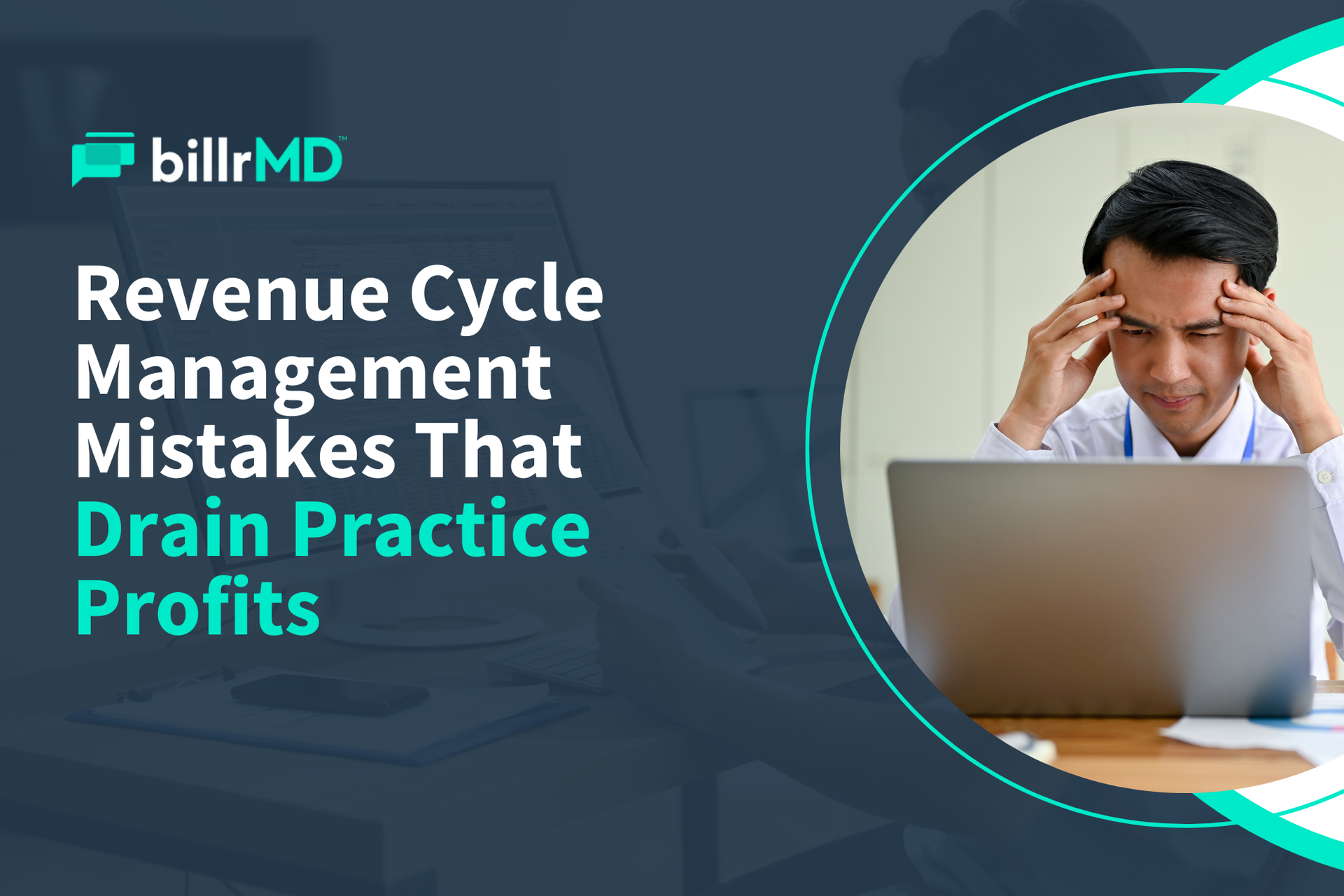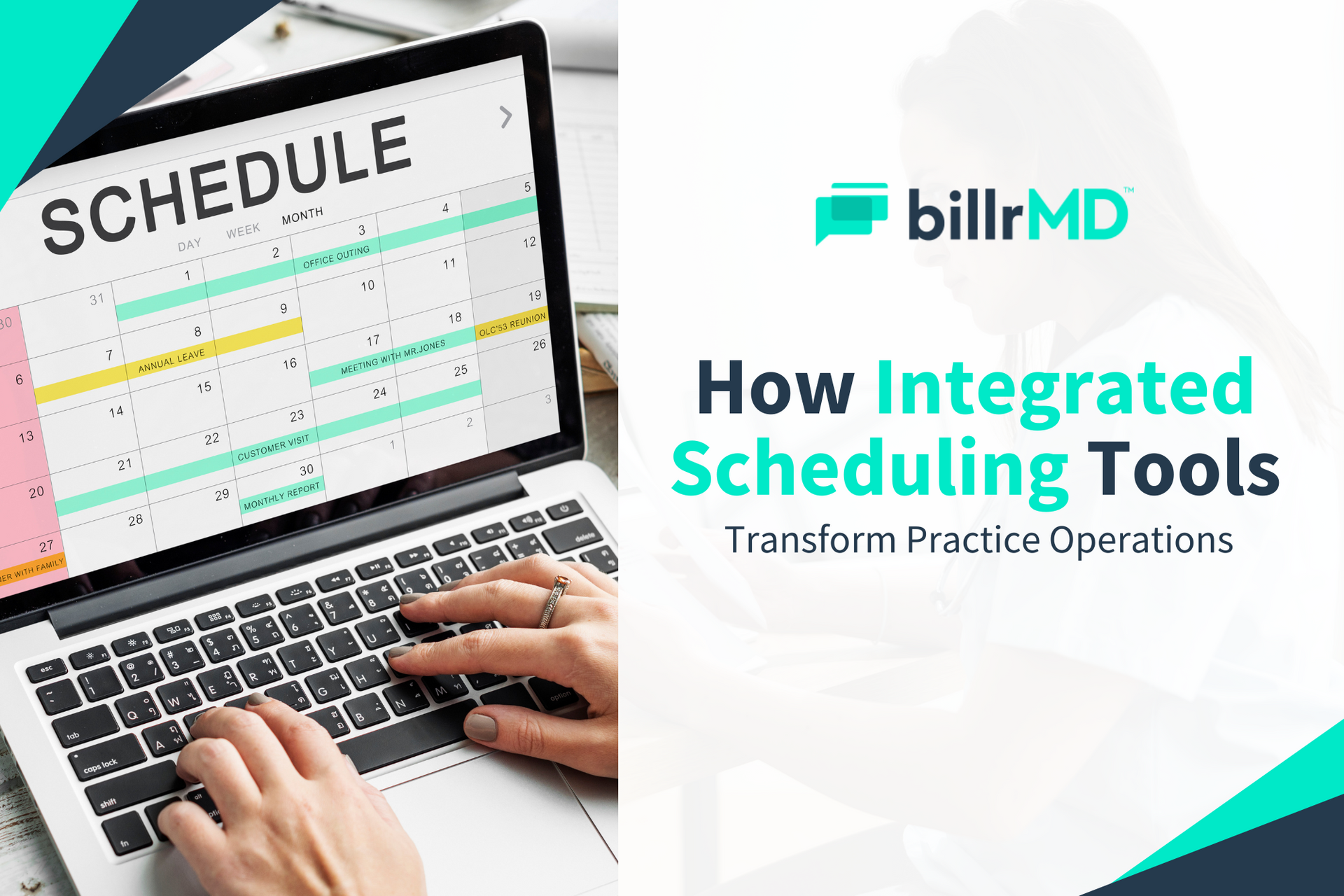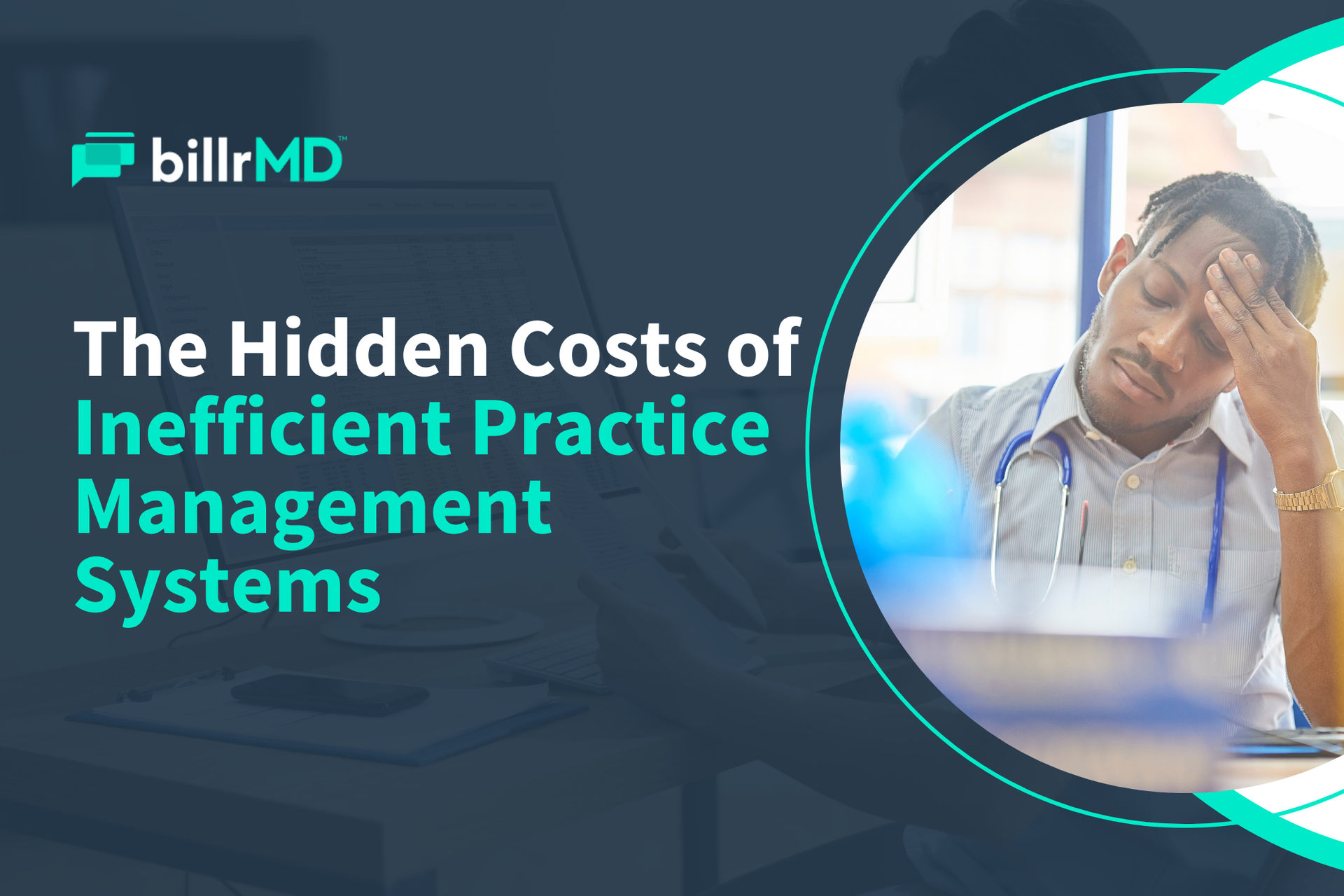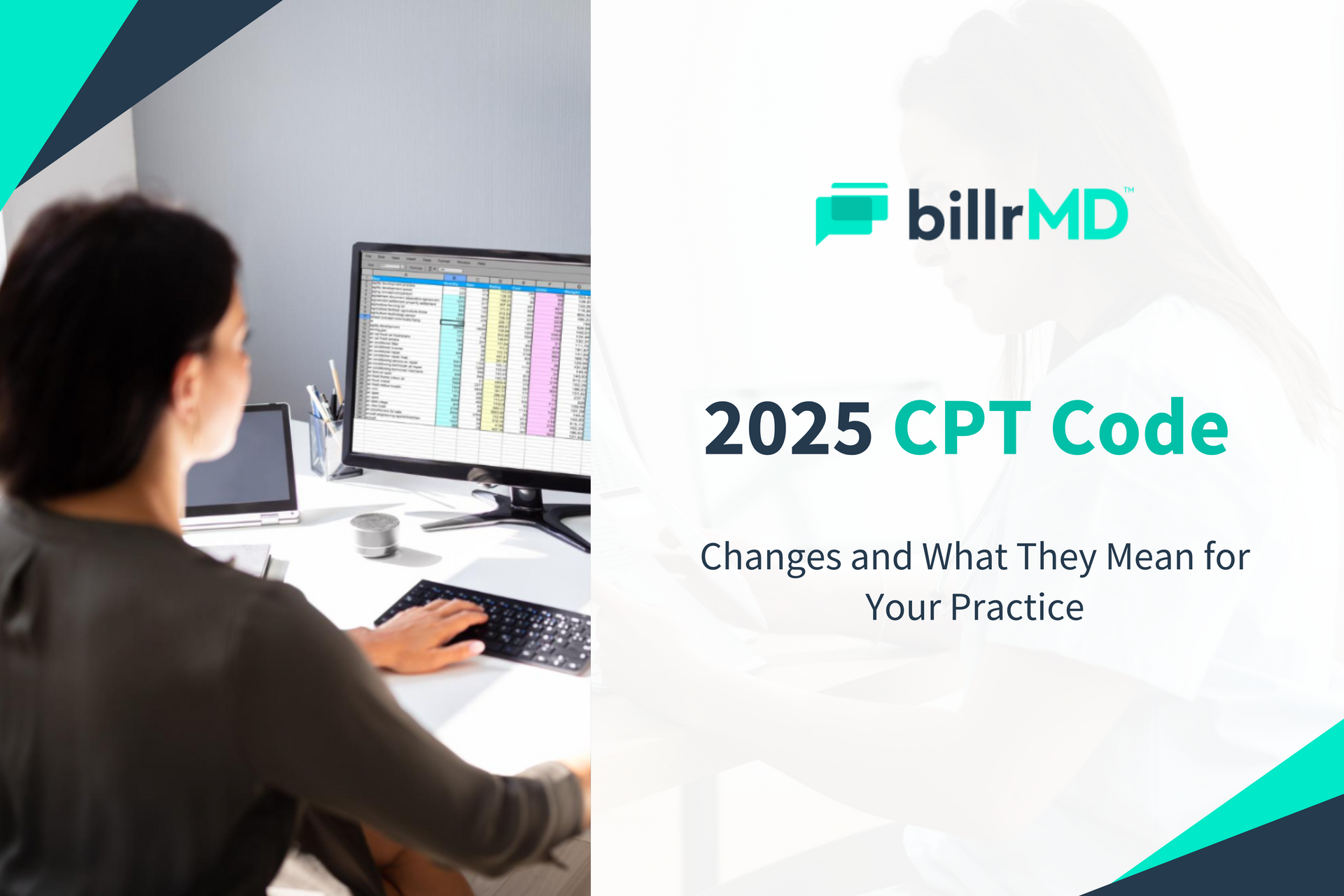Medical Billing Checklist: Start the New Year Right

Is your revenue cycle ready to thrive in 2025?
Workflow inefficiencies left overlooked can quietly chip away at your practice's profits, especially in billing and compliance. As the clock ticks toward 2025, now is the perfect time to reassess your revenue cycle management.
Envision stepping into the new year with fewer claim denials, optimized cash flow, and a solid financial foundation.
Proactive planning is a vital step in making this vision a reality. By focusing on critical aspects of your revenue cycle now, you can enhance efficiency, ensure compliance, and maximize profitability in the coming year.
Maximize Reimbursement in 2025 with billrMD!
Vital Year-End Tasks for Revenue Cycle Management
As you wrap up this year, it's crucial to tackle any lingering issues in your revenue cycle management to pave the way for future success. Below are the top essential tasks to help you eliminate existing hurdles and set a good start for the year ahead.
1. Review Year-End Financial Reports
A thorough review of your yearly billing reports uncovers valuable insights into your practice's operations. Using these insights to identify areas for improvement will help you set practical goals to enhance your financial performance going forward.
Begin by focusing on the critical metrics that reveal the state of your revenue cycle.
- Revenue Cycle Performance: Measure how effectively your practice converts services rendered into actual revenue. Identify areas where revenue leakage might occur, such as delayed claim submissions or underpayments.
- Accounts Receivable (AR) Days: Calculate how many days, on average, it takes to collect payments. Lower AR days indicate faster collections and better cash flow, while higher AR days suggest inefficiencies in collections or insurance follow-ups.
- Claim Denial Rates: Analyze your denials management in medical billing. Calculate claim denial rates and categorize the reasons behind these rejections. Are they due to payer-specific challenges, incomplete documentation, or coding mistakes? Identifying these trends can help you avoid similar issues in 2025.
2. Update Budget and Forecast for 2025
Budgeting isn’t just about balancing the books or allocating funds. It’s about strategically aligning available resources with your practice’s objectives for growth. An adaptable, detailed budget lets you navigate hurdles and confidently capitalize on opportunities.
While updating your budget, consider plans like offering additional medical services, increasing patient volume, or bringing new team members aboard. Remember to factor in the costs of necessary training, technological investments, and infrastructure improvements that accompany these changes.
To ease the burden of financial planning, leverage technology. Practice management and billing software systems have data analytics tools to help you predict revenue, estimate costs, and create accurate forecasts based on past trends and your future targets.

3. Set Up for CPT Code Changes for 2025
The American Medical Association (AMA) updates the CPT codes annually to reflect changes in medical billing standards. Staying ahead of these changes is vital for accurate coding and effective denials management to prevent claim rejections.
The CPT 2025 code set introduces a total of 420 updates, consisting of 112 deletions, 270 new codes, and 38 revisions. Below are the highlights of these updates.
- Augmented/Artificial Intelligence (AI): Seven new category III codes now recognize AI-enhanced data analysis in key medical fields: electrocardiogram measurements (0902T and 0932T), chest imaging (0877T–0880T), and image-guided prostate biopsies (0898T).
- Digital Medicine: Updates were made to remote therapeutic monitoring (RTM) codes. Code 98975 now includes digital therapeutic interventions, while revisions to codes 98976–98978 include device supplies necessary for data access or transmission to aid remote patient monitoring.
- General Surgery: The CPT general surgery section now includes updates showcasing new skin graft techniques for wound care and recovery (15011-15018) and advancements in the surgical methods for removing abdominal tumors (49186-49190).
By preparing your team and systems for CPT code changes, you’ll ensure a smooth transition into 2025 and maintain uninterrupted cash flow. Make sure to carry out:
- Team Training: Organize role-based training sessions to walk your billing and coding staff through the latest CPT code changes and guidelines. Focus on clarifying how these adjustments will influence their day-to-day tasks for impact documentation and billing.
- Software Updates: Communicate with your third-party partners and ensure your practice management and medical billing software has the 2025 CPT codes.
- Medical Documentation Review: Double-check your documentation to align with the latest coding standards. Inaccurate or incomplete records are a top cause of claim denials.
4. Evaluate and Update Workflows
Efficient workflows are the backbone of denial management in medical billing. Start by identifying where your processes slow down and exploring ways to resolve those issues. Evaluate whether or not your team’s current structure is adequate. Are roles clearly defined, and is work evenly distributed? Consider additional training or investing in better healthcare technology solutions to enhance productivity.
5. Review Compliance Requirements for 2025
Falling behind on regulatory changes can be costly, with risks like claim denials, penalties, and reputational damage. Here are a few updates you need to know.
ICD-10
The 2025 ICD-10 updates bring 252 new codes, 36 deletions, and 13 revisions. These changes have been in effect since October 1, 2024, so they should already be reflected in your workflows. Some of the changes include:
- ICD-10 Codes for Diseases of the Digestive System: In Chapter 5, the new fifth and sixth character codes for digestive conditions in 2025 provide more details of the condition's complexity.
- ICD-10 Codes for Cancer in Remission: Chapter 2, dedicated to neoplasms, gained 63 new codes, including classifications for cancers in remission.
- ICD-10 Codes for Conditions Affecting Bones, Joints, or Muscles: Chapter 13 has a more detailed look at synovitis and tenosynovitis, offering precise information based on their location in various body parts.
- ICD-10 Codes for Mental Health Disorders: Chapter 5 (Mental and Behavioral Disorders) expands its scope by detailing the type and severity of eating disorders and including two new codes for adult mental health conditions.
HIPAA
Review the latest HIPAA requirements to ensure your patient data security measures meet or exceed current standards. Before the year ends, here are the two changes you need to know:
- HIPAA Security Rule Update
The Department of Health and Human Services (HHS) has proposed updates to the HIPAA Security Rule to enhance requirements for regulated entities to better prevent, detect, contain, mitigate, and recover from cybersecurity threats.
These updates are currently under review by the Office of Management and Budget (OMB), with a Notice of Proposed Rulemaking expected before the end of 2024. Healthcare stakeholders can submit feedback on the proposed update for 60 days after its publication in the Federal Register.
- Privacy Rule Modifications for Reproductive Health Care
HHS has finalized updates to the HIPAA Privacy Rule aimed at safeguarding reproductive health care privacy. The changes took effect last June 25, 2024, which prohibit the use or disclosure of protected health information (PHI) for investigations or proceedings concerning legally provided reproductive health care. Entities have until December 23, 2024, to comply. Additionally, they must revise their Notices of Privacy Practices by February 16, 2026.
Payer Policies
Insurance payers often revise their rules, including pre-authorization requirements, reimbursement rates, and documentation standards. A few of the updates this 2025 include:
Medicare Adjustments
- The CMS has finalized a 2.83% reduction in the Medicare Physician Fee Schedule (PFS) conversion factor for 2025, decreasing it from $33.29 in 2024 to $32.35.
- Medicare Part D will implement a $2,000 cap on out-of-pocket prescription drug costs to alleviate financial burdens on beneficiaries.
- Medicare is introducing a new program called GUIDE (Guiding an Improved Dementia Experience), which provides up to $2,500 annually to support respite care for individuals with dementia.
Telehealth Policy Updates
CMS has finalized changes to telehealth services under the 2025 PFS, including adding new services to the Medicare Telehealth Services List and continuing audio-only telehealth options. These updates expand beneficiaries' access to telehealth while adjusting specific policies established during the COVID-19 public health emergency.
Start Strong This 2025 with billrMD!
Kicking off the new year with a smoother billing process and improved practice management sets the tone for a financially strong year ahead. Regular audits and updates along the way will help ensure lasting success for your organization.
To sustain operational efficiency and compliance, adopting advanced healthcare solutions is paramount.
Leveraging the best medical billing software with extensive practice management features allows you to automate processes, eliminate errors, and maximize your revenue potential.
billrMD provides a comprehensive solution for all your practice's needs. Take the first step toward a more efficient 2025!
Schedule a Demo with billrMD Today!
Recent Posts
One software for all your practice management needs.
billrMD | All Rights Reserved.
billrMD | All Rights Reserved.











